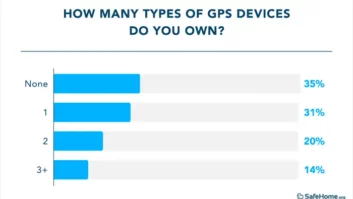Yonkers, N.Y. – Consumer Reports
won’t put the Verizon iPhone 4 on its list of recommended smartphones because
it suffers from the same reception problem as its AT&T counterpart,
Consumers Union said after putting the phone through a
.
Consumers who hold either phone
version “in a specific but quite natural way,” covering a gap in the external
casing, could cause the phone to drop calls, or not place calls, in weak signal
conditions, CU said. Using the Verizon iPhone in a protective case, however,
eliminates the problem, as it does with the AT&T iPhone, CU said.
In contrast to last year’s launch
of AT&T’s iPhone 4, “there have not been widespread reports of reception
difficulties with the Verizon iPhone 4,” CU admitted, noting that Verizon’s
network, unlike AT&T’s, “has received above-average scores from our readers
for the reliability of its voice service in the past.” Nonetheless, the company
said, “low signal conditions are unavoidable when using any cellphone network,”
and as a result, “we are not including the Verizon iPhone 4 in our list of
recommended smartphones, despite its high ranking in our ratings.”
On an unrelated topic, the
company noted that calls placed from the Verizon iPhone 4 to other phones sounded
better than they did when placed from the AT&T iPhone. Calls received on
the AT&T phone, however, sounded better than calls received on the Verizon
iPhone.
For its tests of Verizon’s
iPhone, CU also tested five other Verizon smartphones that it rates highly.
They are the Samsung Fascinate, Motorola Droid 2 Global, HTC Droid Incredible,
LG Ally and Motorola Droid X.
The tests were conducted in a
radio-frequency isolation chamber, where CU used a base-station emulator to
simulate the signals that phones receive in the field. Testers placed a finger
on each phone in multiple locations around its edge and monitored changes to
the phone’s performance at each position, CU explained. “The only phones in
which the finger contact caused any meaningful decline in performance was the
iPhone 4, the sides of which comprise a metal band broken by several thin
gaps,” CU found. “As with our tests of the AT&T iPhone 4, putting a finger
across one particular gap — the one on the lower left side — caused
performance to decline.”
Bridging that gap, CU contended,
“is easy to do inadvertently, especially when the phone is in your palm, which
might readily and continuously cover the gap during a call.”
Also as part of its test, CU captured
“live” network signals via antennas mounted on top of the company’s
testing center here, then piped them into the isolation chamber, where CU used
equipment to vary their signal strength.
CU placed calls on each phone at differing signal-strength levels, and
if the call went through, CU testers touched the phones to note performance
changes. With all phones but the Verizon iPhone, testers also gripped the
phone’s sides. “In all such cases, no calls were dropped,” CU said.
With the iPhone 4, however, testers touched
the phone’s lower left side gap, and “reception typically dropped notably
within 15 seconds or so of the gap being bridged.” The phone “eventually
dropped calls when touched at very low signal strength — that is, at levels of
around one bar in the phone’s signal-strength meter,” CU said.
In addition, at each level at which calls were
dropped, testers tried to place calls from the iPhone with a finger covering
the gap. “In all such cases, we couldn’t initiate a call,” CU said.
CU also conducted supplementary
tests using “live” network signals of low strength in the field.
“These tests, too, yielded dropped calls and an inability to place calls,” CU
said.













